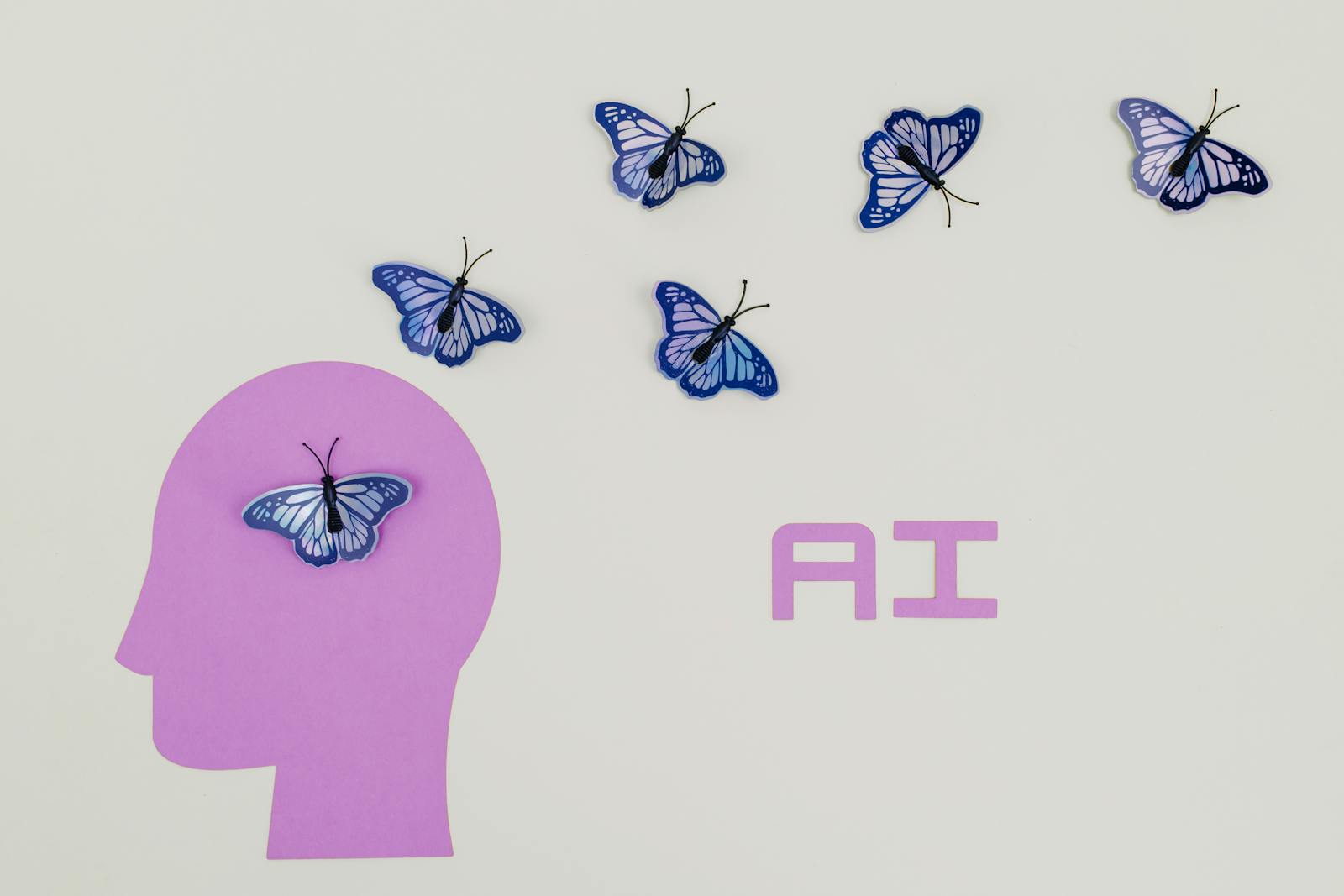AI and Ethics: Navigating the Moral Maze
Artificial intelligence is rapidly weaving itself into the fabric of our daily lives. From the recommendations on our streaming services to the algorithms that shape our news feeds, AI is no longer a sci-fi concept – it’s here. And with its growing presence comes a crucial set of questions. How do we ensure these powerful tools are used responsibly? What are the ethical implications of machines making decisions that affect us? Honestly, it’s a bit like trying to navigate a maze in the dark. We’re building these incredibly complex systems, but the map of their moral landscape is still being drawn. This isn’t just an academic exercise; it’s about shaping a future where AI benefits humanity without causing unintended harm. So, where do we begin to untangle this complex web of AI and ethics?
Bias and Fairness in Algorithmic Decision-Making
One of the biggest ethical minefields when it comes to AI is bias. You see, AI systems learn from data. If that data reflects existing societal biases – whether it’s racial, gender, or socioeconomic – the AI will learn and perpetuate those biases. It’s sort of like teaching a child using only books that tell a skewed version of history; they’ll end up with a skewed understanding of the world. Think about AI used in hiring. If historical hiring data shows a preference for a certain demographic, an AI trained on that data might unfairly screen out qualified candidates from underrepresented groups. That’s not what we want, right? It gets tricky because often, these biases aren’t obvious. They can be subtle, hidden deep within massive datasets.
So, how do we start to tackle this? Well, a big part of it is about being really careful with the data we feed AI. This means actively seeking out diverse datasets and, if possible, cleaning or correcting biased information. Tools are emerging that help detect bias in datasets and models, but they’re not perfect. It’s a bit like having a metal detector for bias, but sometimes it misses things, or flags things that aren’t actually a problem. What do people often get wrong here? They assume that because AI is mathematical and logical, it must be objective. But AI is only as objective as the data and the humans who design it. A common challenge is that identifying and quantifying bias can be incredibly difficult, especially when dealing with complex, multi-dimensional datasets.
Where does it get particularly tricky? When AI systems are used for high-stakes decisions, like loan applications, criminal justice sentencing, or medical diagnoses. A small, seemingly insignificant bias in these systems can have devastating real-world consequences for individuals. It’s a huge responsibility. But there are small wins that build momentum. For example, companies starting to publish diversity reports for their AI teams, or researchers developing new fairness metrics. It’s not a quick fix, but these steps show a growing awareness and a commitment to doing better. When it comes to practical tools, think about fairness toolkits like IBM’s AI Fairness 360 or Google’s What-If Tool. They’re not magic wands, but they offer ways to explore and mitigate bias. The key is continuous vigilance and a commitment to equitable outcomes.
Transparency and Explainability: The “Black Box” Problem
Another big ethical question surrounds the opacity of many AI systems. We call this the “black box” problem. Essentially, some of the most powerful AI models, particularly deep learning networks, are so complex that even their creators can’t fully explain *why* they arrive at a particular decision. Ever wonder why a particular ad pops up constantly, or why a piece of content gets recommended? Sometimes, it’s hard to get a straight answer. For us as users, this lack of transparency can be unsettling. If an AI denies your loan application, or flags you for a security risk, you have a right to know why, right? Without understanding the reasoning, how can you challenge it, or even learn from it?
This is where the concept of explainable AI (XAI) comes in. The goal of XAI is to make AI decisions understandable to humans. It’s about opening up that black box, even just a little. How do we begin to do this? Researchers are developing techniques to visualize AI decision-making processes or to generate simplified explanations for complex outputs. Common tools include methods like LIME (Local Interpretable Model-agnostic Explanations) and SHAP (SHapley Additive exPlanations), which help to understand the importance of different input features for a given prediction. What do people get wrong about this? They might think that a simple explanation is enough. But the reality is that true explainability can be technically very challenging, especially for very complex models.
Where does it get tricky? Balancing accuracy with interpretability. Often, the most accurate AI models are the least transparent. So, there’s a trade-off. We might have to accept slightly less perfect performance in exchange for understanding *how* the AI works. A small win that builds momentum is when regulatory bodies start requiring a certain level of explainability for AI used in critical sectors. This pushes developers to prioritize these methods. Think about the implications for accountability. If an AI makes a mistake, who is responsible? The programmer? The company that deployed it? The AI itself? Without transparency, assigning blame and preventing future errors becomes incredibly difficult. It’s a genuine challenge that requires both technical innovation and thoughtful policy.
Autonomous Systems and Accountability
As AI systems become more autonomous – capable of acting and making decisions without direct human intervention – the question of accountability becomes even more pressing. Self-driving cars are a prime example. If an autonomous vehicle causes an accident, who is at fault? Is it the owner, the manufacturer, the software developer, or perhaps the AI itself? This is a moral maze with no easy exits. The technology is advancing faster than our legal and ethical frameworks can keep up. We’re moving from AI as a tool to AI as an agent, and that shift brings a whole new set of ethical dilemmas.
How do we begin to address this? One way is through the development of clear ethical guidelines and regulations for autonomous systems. This involves extensive testing, robust safety protocols, and designing systems that can justify their actions in retrospect. What do people get wrong? They might focus solely on the technical capabilities, overlooking the profound societal and ethical implications. A common challenge is defining the threshold for autonomy. At what point does an AI become “autonomous” enough that the rules of accountability need to change? It’s not a clear line. Where does it get tricky? When you consider situations with unavoidable harm, like the classic “trolley problem” scenario adapted for self-driving cars. Should the car prioritize the safety of its passengers, or minimize overall casualties, even if it means sacrificing its occupants? These are deeply complex ethical quandaries with no universally accepted answers.
Small wins that build momentum include the establishment of industry standards for AI safety and testing. For instance, initiatives by organizations like SAE International for autonomous vehicle standards. Practical tools here are less about code and more about process – rigorous risk assessment frameworks, ethical review boards for AI development, and robust logging mechanisms that record the AI’s decision-making process. The goal is to build systems that are not only capable but also justifiable and, when necessary, attributable. It’s about ensuring that as machines gain more power, our human values and our sense of responsibility remain firmly in control. We need to be proactive in shaping these guidelines before potential crises force our hand.
Quick Takeaways
- AI bias is learned from data; clean data and diverse teams are essential.
- The “black box” problem means we often don’t know why AI makes a decision – XAI aims to fix this.
- Autonomous AI raises tough questions about who’s responsible when things go wrong.
- Balancing AI accuracy with explainability is a significant challenge.
- Ethical AI development requires continuous effort, not just a one-time fix.
- Human oversight and clear regulations are crucial as AI becomes more capable.
- We need to think about AI ethics *now*, not just when problems arise.
The Path Forward: Building Trust and Responsibility
Navigating the moral maze of AI isn’t a task for a single person or even a single industry. It requires a collective effort. We’ve talked about bias, transparency, and accountability – these are critical pieces of the puzzle. But building trust in AI also means considering its impact on society more broadly. How will AI affect jobs? What about privacy concerns as AI systems collect and analyze more personal data? These are all part of the ethical landscape. It’s a bit like gardening; you can’t just plant a seed and expect a perfect garden. You need to tend to it, weed it, and adapt as it grows. The same applies to AI. We need ongoing dialogue, ethical frameworks that evolve, and a commitment to human-centric development.
So, how do we move forward responsibly? It starts with education and awareness. Understanding the potential pitfalls allows us to steer development in a better direction. It means fostering interdisciplinary collaboration – bringing together computer scientists, ethicists, social scientists, policymakers, and the public. Common tools? Think about ethical AI checklists, impact assessment frameworks, and public consultations. What do people get wrong? Sometimes, there’s a tendency to view AI ethics as a purely technical problem. But it’s as much about human values and societal impact as it is about algorithms. The challenge is significant, honestly. It requires us to be thoughtful, critical, and willing to adapt as the technology changes.
Where does it get tricky? Striking the right balance between fostering innovation and implementing necessary safeguards. We don’t want to stifle progress, but we absolutely need to ensure that progress is ethical. Small wins here are crucial: universities incorporating AI ethics into their computer science curricula, companies establishing internal AI ethics boards, and governments beginning to draft AI regulations. The ultimate goal is to build AI systems that not only perform tasks efficiently but also align with our fundamental human values – fairness, dignity, and well-being. It’s about ensuring that as we delegate more decisions to machines, we don’t lose sight of our own moral compass. The path forward is one of continuous learning, adaptation, and a steadfast commitment to ethical principles, ensuring that AI serves humanity in a way that we can all trust.





